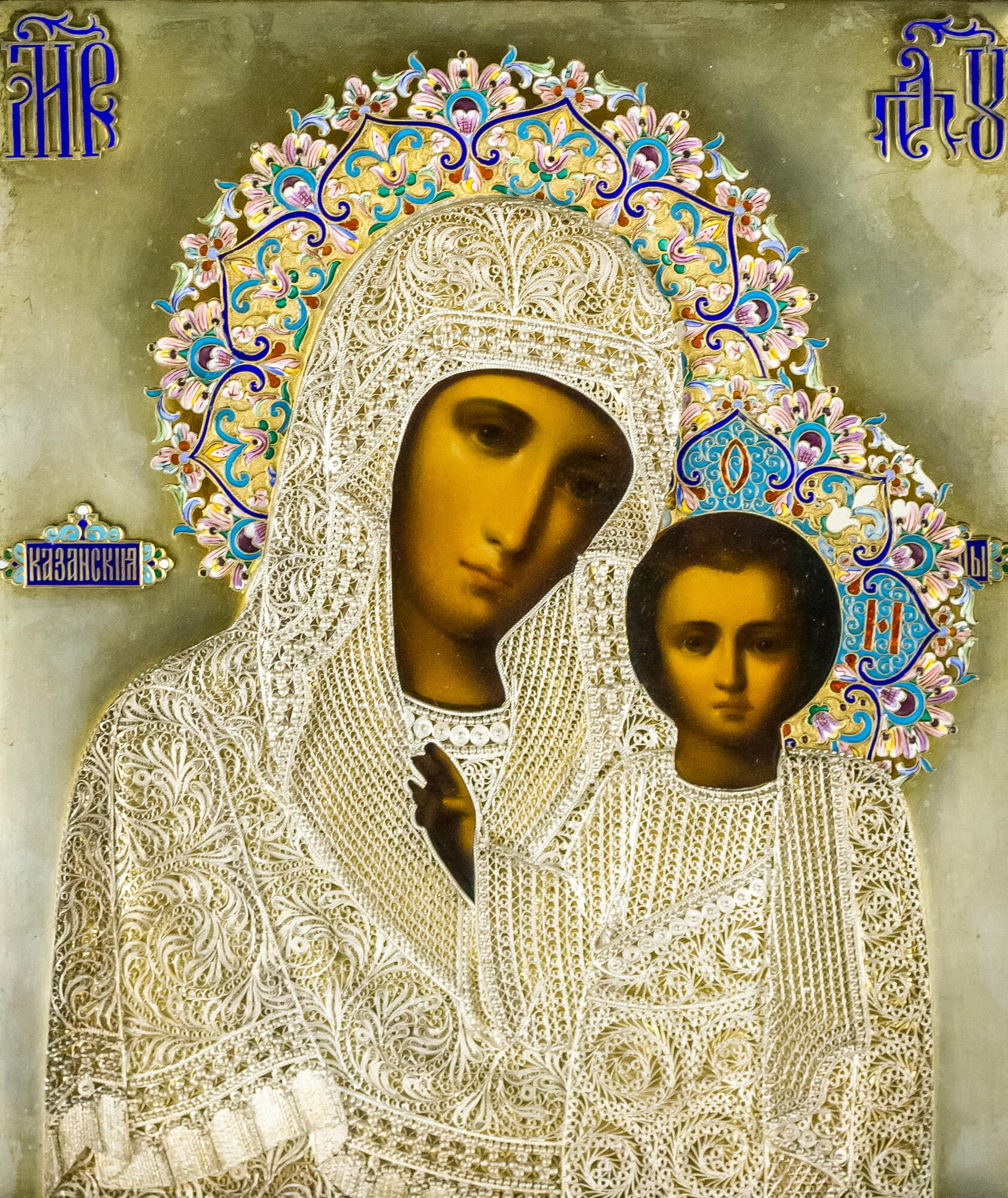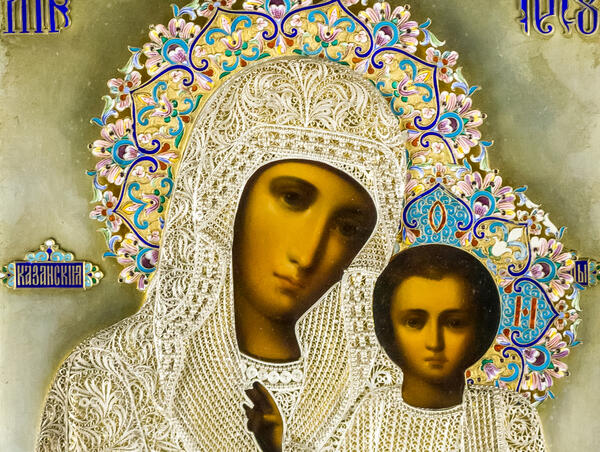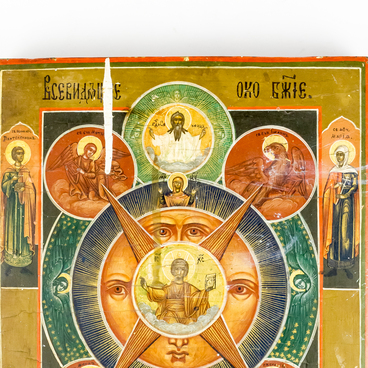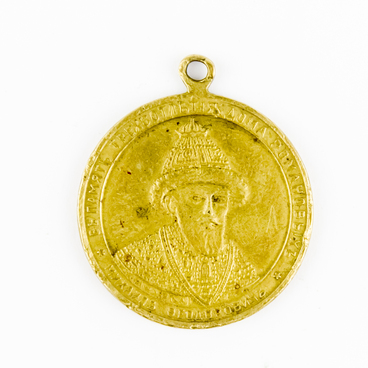The icon from the museum collection was created by an unknown artist at the turn of the 20th century. The icon painter paid special attention to the revetment: he used the finest patterns of silver to feature the clothes and decorated the halos with the filigree ornament enamel. Filigree is a type of jewelry technique in which a craftsman creates an openwork pattern using a thin metal thread.
This icon is a copy of a particularly revered icon of the Kazan Mother of God Tetyushskaya. “Tetyushskaya” means that the image is associated with the district town of Tetyushi in the Kazan governorate.
There are several versions of how this image appeared among people. The most popular version is that the Mother of God appeared in a dream to the merchant Gerasim Trofimov from the city of Romanov and ordered to find the icon in one of trade shops in Tetyushi. It was necessary to find an image painted in the likeness of the famous Kazan Mother of God. The merchant complied with the instructions. For a long time, the Tetyushi copy was located in Romanov, and later it was brought to Yaroslavl, where it became famous for various miracles. At the beginning of the 20th century, it disappeared, and its fate is still unknown.
However, the Christians in Tetyushi never forgot about the miraculous icon, and in many churches, its copies were kept. The icon from the museum collection, apparently, was one of such lists. On its back, there is a copper plate with the inscription:
This icon is a copy of a particularly revered icon of the Kazan Mother of God Tetyushskaya. “Tetyushskaya” means that the image is associated with the district town of Tetyushi in the Kazan governorate.
There are several versions of how this image appeared among people. The most popular version is that the Mother of God appeared in a dream to the merchant Gerasim Trofimov from the city of Romanov and ordered to find the icon in one of trade shops in Tetyushi. It was necessary to find an image painted in the likeness of the famous Kazan Mother of God. The merchant complied with the instructions. For a long time, the Tetyushi copy was located in Romanov, and later it was brought to Yaroslavl, where it became famous for various miracles. At the beginning of the 20th century, it disappeared, and its fate is still unknown.
However, the Christians in Tetyushi never forgot about the miraculous icon, and in many churches, its copies were kept. The icon from the museum collection, apparently, was one of such lists. On its back, there is a copper plate with the inscription:



